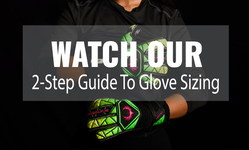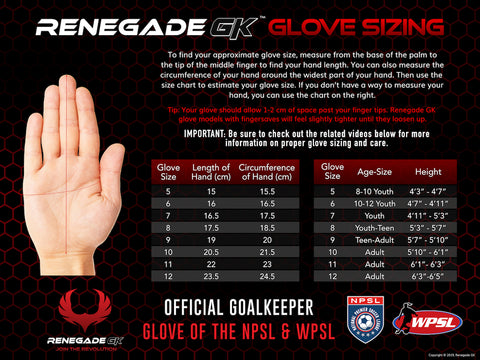Q: Why Does a Keeper Need Flexibility?
A: It's incredibly important to recognize the difference between flexibility and mobility, as they're often confused. A great goalkeeper need not be overly flexible (but they shouldn't lack in flexibility either), but they should have mobility in specific parts of their body that are tailored to the keeper position. Great goalkeepers are going to want good ankle and hip mobility to enable them to jump successfully in both high jump and lateral jump game scenarios. Simple drills like calf raises and lunges will help mobility in these areas.
Great goalkeepers need glute and hamstring mobility as well. Mobility in this part of the body permits the keeper to generate as much power as possible. Dynamic stretching exercises such as walking toe touches will increase a keeper's glute and hamstring mobility.
Q: Why Does a Goalkeeper Need Agility?
A: First, let's define agility. Agility means an ability to change the direction of your body with a combination of speed, strength, coordination, and balance. Goalkeepers need agility to change the shape or form of their body to make successful saves. Any keeper can react, but great goalkeepers make saves by being very agile. Without this core keeper trait, you'll be caught napping while the ball zips past- and you just lost a score.
Q: Why Does A Goalkeeper Need Reaction Time?
A: A goalkeeper's reaction time is the time that it takes for the player to react to a given game situation. Reaction time all comes down to the keeper's reflexes. If the keeper sees the ball early enough and accurately judges the speed and flight of the ball, they will have time to react and make the save.

Q: Why Does A Goalkeeper Need Balance?
A: Balance is a critical component of a good goalkeeper starting position, allowing the keeper the best chances for completing a save. Proper balance begins at a goalkeeper's feet and should follow all the way up to their head. When you watch champion goalkeepers, they complete successful saves and are always adjusting, repositioning, and rebalancing. Their best reaction saves all begin with good, solid balance.
Q: Why Does A Goalkeeper Need Strength?
A: Most keepers spend the greatest amount of their training time focused on skill-specific training exercises, which puts them at a fair disadvantage as this produces goalkeepers with some form of physical deficiencies that hinder the keeper from reaching their peak performance level. Great keepers achieve champion-level play by making time for a strength and conditioning program that challenges total body balance, explosive movements, and has measurable goals. Strength and conditioning are not successful when done sporadically and without a key driving strategy. A goalkeeper must be committed to their training programs and follow it precisely to get the most benefit.
The demands placed on a goalkeeper are nothing like those placed on a field player- the keeper must approach training differently than the rest of the team. A keeper must place their focus on improving the areas that are the most important and are utilized during game-play- strength and power are core elements of any great keeper's game.
To increase strength and power, a keeper should understand how muscles and tendons work. There are three phases that your tissue goes through during explosive movements like jumping. First, the muscle lengthens (this is the eccentric phase), which is immediately followed by a slight delay of time (called the transition phase), and then finally, the keeper's muscle shortens or contracts (which is the concentric phase). When your muscle goes into the eccentric phase, the muscle begins to store energy. As it enters the transition phase, the message is sent to the spinal cord, and a response is sent back to the muscle. Finally, during the concentric phase, the stored energy is released, and the movement is performed.









